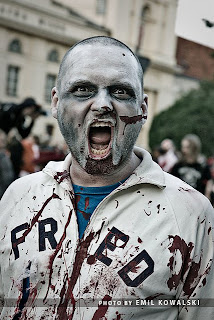And now, the final part of our zombie/environmental golf series, courtesy of Kevin Fletcher, Ph.D., president and CEO of e-Par USA. For parts one and two, just scroll down!
And happy Halloween!
7.
When in
Doubt, Make Sure You Hit the Brain (Review & Make Corrections): In Zombieland, this was termed a
“double-tap.” Not sure that was a clean head-shot? You’d hate to have a
half-gone member of the undead pop up suddenly and bite your ankle as you’re
walking by all full of pride. Shoot again to make sure you got ‘em.
Likewise, don’t assume you’ve done all you can and should to manage the
environmental part of your game. To quote the great philosopher Ice Cube, “You
gotta check yo’ self before you wreck yo’ self.” Include a periodic and ongoing
self-audit and management review of your environmental management systems. Identify
any weaknesses and correct them. That’s what continuous improvement is all
about.
8.
Share What
Works, There’s Strength in Numbers (Act Well and Tell Your Story): Inevitably,
in zombie movies, the main group of survivors ends up running into another
group of survivors. There’s that first awkward introduction when they all
nearly shoot each other thinking the others are ghouls at first. However, the
groups eventually start to bond and share their stories over a campfire inside
the broken down warehouse (assuming they followed Rule #2). This is when we
learn what works or doesn’t work when killing a zombie. Perhaps Chip (the
ex-Navy Seal) discovered a new way to lure zombies into a trap and take three
or four out at a time. By sharing their stories, the entire group is made
stronger and learn more inventive (again, audience appeal) ways to dismantle
the blood-thirsty.
Likewise,
the golf industry is made stronger when superintendents find what works, do it
well, measure it, and then report on it. Don’t be afraid to tell people your
story. It’s good for the game, good for group morale, and makes for a nice
break in between those tense moments of the job (or encounters with the zombie
warehouse staff that was hiding in the basement).











